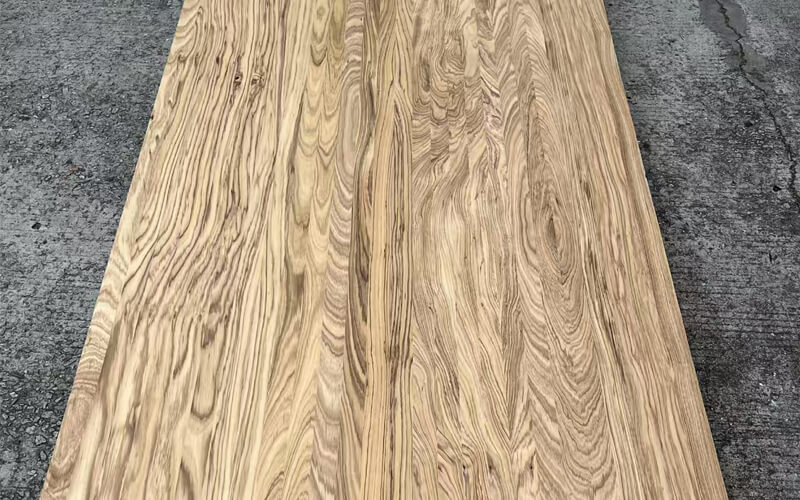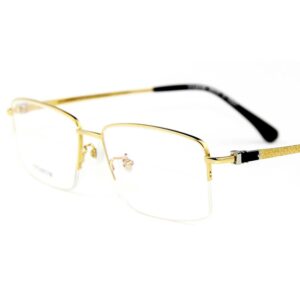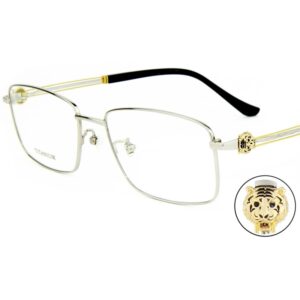Wooden sunglasses have become a must-have accessory for eco-conscious fashionistas and anyone looking to add a touch of nature to their style. Unlike traditional plastic or metal frames, wooden sunglasses offer a unique blend of sustainability, craftsmanship, and natural beauty. But what exactly goes into making these stylish shades? Let’s explore the entire process, from selecting the perfect piece of wood to putting the final touches on a pair of sunglasses that are both functional and fashionable.
1. Material Selection: Choosing the Perfect Wood
The journey to creating a pair of wooden sunglasses begins with selecting the right wood. This choice is crucial, as the type of wood you choose will impact the look, durability, and comfort of the final product.
- Bamboo: Known for its rapid growth and sustainability, bamboo is lightweight yet strong, making it a popular choice for wooden sunglasses. Its natural flexibility also adds to the comfort of the eyewear.

- Walnut: Walnut offers a rich, dark color with beautiful grain patterns. It’s heavier than bamboo, giving the sunglasses a solid, high-end feel. Walnut is often chosen for its luxurious appearance and durability.

- Maple: Maple provides a lighter, smooth texture, perfect for those seeking a refined, understated look. Its fine grain and subtle color variations make it a versatile choice for both classic and modern designs.
- Zebrawood: Zebrawood is another option that stands out with its striking grain patterns and alternating light and dark stripes. It adds a bold, exotic flair to the sunglasses.

- Ebony: Known for its deep black color, ebony wood is dense and durable. It’s often used for high-end sunglasses that exude elegance and sophistication.

When selecting wood, it’s not just about aesthetics. Sustainability is key. Using wood from responsibly managed forests or reclaimed wood ensures that your sunglasses are environmentally friendly, aligning with the growing demand for eco-conscious products.
2. Wood Preparation: Crafting the Foundation
Once the wood is chosen, the next step is to prepare it for the manufacturing process. This involves a series of steps to ensure that the wood is ready to be transformed into durable and stylish frames.
Cutting and Slicing: The wood is first cut into smaller blocks or sliced into thin veneers, depending on the design of the sunglasses. For thicker, solid wood frames, larger blocks are used, while thinner veneers are ideal for laminated designs that require multiple layers.

Drying the Wood: Wood naturally contains moisture, which can cause it to warp or crack if not properly treated. To prevent this, the wood is dried in a controlled environment, reducing its moisture content to a stable level. This drying process can take several days to weeks, depending on the wood type and thickness.

Stabilizing the Wood: To further enhance durability, the wood may undergo a stabilization process. This involves impregnating the wood with a resin or other stabilizing agent, which fills the wood’s pores and makes it more resistant to moisture and temperature changes. Stabilized wood is less likely to warp, crack, or swell, ensuring that the sunglasses will last for years to come.

3. Laminating the Wood: Building Strength and Style
Laminating is a critical step in the production of wooden sunglasses, especially for designs that require added strength or unique visual effects.
Layering for Strength: For laminated designs, multiple layers of wood veneer are glued together using a high-strength adhesive. Each layer is carefully aligned to ensure consistency in thickness and grain pattern. The number of layers can vary, but typically, more layers mean greater strength and durability.

Pressing the Layers: Once the layers are glued, they are placed in a hydraulic press that applies even pressure across the entire surface. This step is crucial to eliminate air bubbles and ensure that the layers bond tightly together. The press is held in place until the adhesive cures, forming a single, solid piece of laminated wood.

Design Possibilities: Laminating offers a unique opportunity to mix and match different types of wood. For example, combining dark walnut with light maple can create a striking contrast, while alternating layers of bamboo and zebrawood can produce a bold, textured look. The possibilities are endless, allowing for truly custom designs that stand out from the crowd.

4. Frame Shaping: Bringing the Design to Life
With the laminated or solid wood blocks ready, the next step is to shape them into the basic form of the sunglasses. This is where the design begins to take on its final appearance.
Cutting the Frames: The laminated wood or solid wood block is cut into the basic shape of the sunglasses frame using a CNC (Computer Numerical Control) machine. CNC machines are favored for their precision, allowing for intricate designs and consistent quality across multiple pairs. For artisans who prefer a hands-on approach, manual tools can also be used, though this requires a high level of skill and experience.

Sanding the Frames: After cutting, the frames are rough and need to be smoothed out. Sanding is a multi-step process that begins with coarse sandpaper to remove any large imperfections, followed by finer grits to achieve a smooth finish. This step is essential for both the appearance and comfort of the sunglasses, as any rough spots could be uncomfortable to wear.

Shaping the Frame Details: This stage also involves shaping finer details like the nose bridge, the contours of the frame, and the curves of the temples. Each detail is meticulously crafted to ensure a perfect fit and a comfortable wearing experience. Special attention is given to the areas where the lenses will be mounted, ensuring a precise fit that holds the lenses securely in place.

5. Nose Bridge and Temple Construction: Ensuring Comfort and Durability
The nose bridge and temples are critical components of the sunglasses, responsible for how they sit on the face and how comfortable they are to wear.
Crafting the Nose Bridge: The nose bridge must be carefully shaped to fit comfortably on the wearer’s nose. This involves creating a smooth, curved surface that evenly distributes the weight of the sunglasses, preventing them from slipping. In some designs, additional pads or silicone inserts are added to the bridge for extra comfort.
Shaping the Temples: The temples (the arms of the sunglasses) need to be shaped to ensure they wrap comfortably around the ears. This step involves not only shaping the wood but also attaching hinges that allow the temples to fold. The choice of hinges—whether spring-loaded for flexibility or fixed for a classic feel—can greatly impact the overall comfort and durability of the sunglasses.

Attaching the Hinges: Attaching hinges is a delicate process that requires precision. The hinges must be perfectly aligned to ensure smooth opening and closing of the temples. Misaligned hinges can cause the sunglasses to sit unevenly on the face or wear out more quickly. Careful drilling and secure attachment with screws or rivets ensure the hinges are both functional and durable.

6. Lens Cutting and Fitting: Protecting Your Eyes in Style
No pair of sunglasses is complete without lenses, and choosing the right lenses is crucial for both function and style.
Cutting the Lenses: Lenses are typically purchased in large, round blanks that need to be cut to fit the specific shape of the wooden frames. This is done using precision cutting tools that ensure the lenses fit perfectly within the frame without any gaps or looseness. The lenses must also be beveled to fit securely into the groove of the frame, preventing them from popping out.

Choosing Lens Types: The choice of lens is just as important as the frame. Common options include:
- Polarized Lenses: These lenses reduce glare from reflective surfaces, making them ideal for driving or outdoor activities.

- UV-Protective Lenses: Essential for eye health, these lenses block harmful UVA and UVB rays from the sun.

- Tinted Lenses: Available in a variety of colors, tinted lenses add a stylish touch while providing additional protection from bright light.

- Photochromic Lenses: These lenses darken in response to sunlight, offering the convenience of wearing the same sunglasses indoors and outdoors.

Fitting the Lenses: Once cut, the lenses are carefully fitted into the wooden frames. This process requires precision, as the lenses need to be securely held without being too tight or too loose. Any mistakes in fitting could lead to lenses that are prone to falling out or cracking under pressure. The final fit is checked multiple times to ensure that the lenses sit perfectly within the frame.

7. Hand Finishing: Adding the Final Touches
With the lenses in place, it’s time to focus on the finishing touches that will make the sunglasses look polished and professional.
Final Sanding: Even after initial sanding, the frames may have minor imperfections that need to be addressed. The frames undergo a final round of sanding to ensure that every surface is smooth to the touch. This step is done by hand, allowing the artisan to feel for any rough spots or inconsistencies.
Applying Oils and Sealants: To enhance the wood’s natural beauty and protect it from the elements, a layer of natural oil or sealant is applied. This not only brings out the richness of the wood grain but also provides a protective barrier against moisture, UV light, and everyday wear and tear. Depending on the desired finish, multiple coats may be applied, with each coat being carefully buffed to a smooth, glossy finish.

Inspecting for Quality: Before the sunglasses move on to assembly, they undergo a thorough inspection. This includes checking for any visible flaws, such as cracks, uneven surfaces, or poor fitting of the lenses. Any issues found at this stage are corrected, ensuring that only the best sunglasses make it to the final assembly.
Receive Custom Guidance
Looking for the perfect custom eyewear to represent your brand?
Reach out to Eyewearbeyond for expert guidance on choosing the best materials, styles, and customizations for your eyewear collection!
8. Assembly: Bringing It All Together
After the individual components are perfected, it’s time to bring everything together in the assembly process.
Attaching the Temples to the Frame: The temples are attached to the frame using small screws or pins, depending on the hinge design. This step requires careful alignment to ensure that the temples fold smoothly and the sunglasses sit evenly on the face. Once attached, the temples are tested for flexibility and strength, making sure they can withstand regular use.
Securing the Lenses: The lenses are secured in place, often using tiny screws or adhesive, depending on the frame design. The lenses must be firmly held without any movement, yet they should not be so tight that they’re at risk of cracking. This delicate balance is key to ensuring the longevity of the sunglasses.
Final Adjustments: After assembly, the sunglasses are given a final round of adjustments. This includes fine-tuning the alignment of the temples, ensuring that the nose bridge sits comfortably, and making any necessary tweaks to the lens fit. The goal is to create a pair of sunglasses that not only look great but also feel comfortable and durable when worn.
9. Quality Control: Ensuring Perfection Before Shipping
Quality control is a crucial step that ensures every pair of sunglasses meets the highest standards before they’re shipped out.
Detailed Inspection: Each pair of sunglasses undergoes a detailed inspection to check for defects. This includes examining the frame for cracks or imperfections, testing the hinges for smooth operation, and ensuring that the lenses are securely fitted and free of scratches.
Durability Testing: The sunglasses are subjected to durability tests, which may include bending the temples, testing the hinge strength, and applying pressure to the lenses to ensure they stay in place. These tests help confirm that the sunglasses can withstand everyday wear and tear without falling apart or losing their shape.
Final Polishing: If any fingerprints, smudges, or dust particles are found on the lenses or frames, the sunglasses are given a final polish. This ensures that they arrive to the customer in pristine condition, ready to wear straight out of the box.
10. Branding and Personalization: Making Each Pair Unique
To add a personal touch and make the sunglasses truly unique, branding and personalization are often the final steps.
Laser Engraving: One popular method for adding logos, designs, or custom messages is laser engraving. This technique allows for precise, intricate designs to be etched into the wood, adding a professional and personal touch. Whether it’s a brand logo, a custom pattern, or a special message, laser engraving can elevate the sunglasses to a whole new level of uniqueness.
Get Your Quote Now!
Curious about the cost of custom logo branding for eyewear?
Our competitive pricing ensures you get high-quality logo customization to enhance your brand’s visibility!
Custom Designs: For those looking to stand out, custom designs can be added to the frames. This might include intricate patterns, unique color combinations, or even artwork created by the customer. Customization options like these make each pair of sunglasses one-of-a-kind.
-

Bulk Wholesale Fashion Wood Sunglasses – WS411
$95.00 Select options This product has multiple variants. The options may be chosen on the product page -

Wholesale Designer Wood Sunglasses – WS101
$95.00 Select options This product has multiple variants. The options may be chosen on the product page -

Wholesale Fashion Wood Sunglasses – WS204
$95.00 Select options This product has multiple variants. The options may be chosen on the product page -

Wholesale Vintage Wood Sunglasses – WS001-RX
$95.00 Select options This product has multiple variants. The options may be chosen on the product page
Personalized Touches: Adding personalized touches, such as initials, a special date, or a meaningful quote, can make the sunglasses even more special. These small details not only add value but also create an emotional connection between the wearer and the product.
11. Packaging and Shipping: Preparing for the Journey to the Customer
With the sunglasses fully assembled and inspected, the final step is packaging and shipping.
Eco-Friendly Packaging: Given that wooden sunglasses are often chosen for their sustainability, it makes sense to package them in eco-friendly materials. Recycled paper boxes, biodegradable packing peanuts, and compostable bags are just a few of the options that can be used to minimize the environmental impact of packaging.
Protecting the Sunglasses: The sunglasses are carefully packaged to ensure they’re protected during shipping. This might include wrapping the frames in a soft cloth, placing them in a protective case, and using padding to prevent movement inside the box. The goal is to ensure that the sunglasses arrive in perfect condition, no matter how far they need to travel.
Branded Packaging: To enhance the unboxing experience, many companies opt for branded packaging. This could include custom-printed boxes, branded cleaning cloths, or even a personalized thank-you note. These small details can make a big impression and help build a stronger connection with the customer.
Conclusion: Crafting Wooden Sunglasses with Precision and Care
Producing wooden sunglasses is a meticulous process that combines craftsmanship, creativity, and attention to detail. From selecting the right wood to adding the final touches, each step plays a vital role in creating a pair of sunglasses that are not only stylish but also durable, comfortable, and eco-friendly. Whether you’re drawn to the natural beauty of wood, its sustainability, or the unique aesthetic it offers, wooden sunglasses are a perfect choice for those who value quality and individuality. Now that you know the process behind them, you can appreciate the craftsmanship and care that goes into each and every pair, making them more than just a fashion accessory—they’re a work of art.
FAQ: A Step-by-Step Guide to Producing Wooden Sunglasses
1. What are the benefits of using wood for sunglasses frames?
Wooden sunglasses are eco-friendly, durable, and offer a unique aesthetic appeal. Each pair is unique due to the natural grain patterns of the wood, and they often have a lighter environmental impact compared to plastic or metal frames.
2. Which types of wood are most commonly used for making wooden sunglasses?
Common woods used include bamboo, walnut, maple, zebrawood, ebony, rosewood, cherry wood, teak, olive wood, mahogany, cedar, cocobolo, Macassar ebony, Purpleheart, and birch. Each type offers different benefits in terms of durability, appearance, and sustainability.
3. Why is wood preparation important in the production of wooden sunglasses?
Proper wood preparation ensures that the frames are durable, stable, and resistant to warping or cracking. This includes drying the wood to reduce moisture, stabilizing it with resins, and laminating veneers to enhance strength.
4. What is laminating, and why is it used in making wooden sunglasses?
Laminating involves gluing multiple layers of wood veneer together to create a strong, stable piece of wood. This process not only increases the durability of the frames but also allows for creative designs by mixing different types of wood.
5. How are the frames of wooden sunglasses shaped?
The frames are typically shaped using CNC machines for precision, though manual methods can also be used. After cutting, the frames are sanded to smooth out rough edges and achieve the desired shape and finish.
6. How are the nose bridge and temples of wooden sunglasses constructed?
The nose bridge is shaped to ensure a comfortable fit on the nose, often with additional padding for comfort. The temples are shaped to fit snugly around the ears and are attached to the frames using hinges, which can be either spring-loaded for flexibility or fixed for a classic look.
7. What types of lenses are used in wooden sunglasses, and how are they fitted?
Common lens types include polarized lenses for glare reduction, UV-protective lenses, tinted lenses, and photochromic lenses. The lenses are cut to fit the frames precisely and are secured in place using screws or adhesive.
8. What steps are involved in the final finishing of wooden sunglasses?
The final finishing includes hand-sanding the frames, applying natural oils or sealants to enhance the wood’s appearance and protect it, and inspecting the frames for any imperfections before assembly.
9. How is quality control managed in the production of wooden sunglasses?
Each pair of sunglasses undergoes a thorough inspection to check for defects, durability, and overall quality. This includes testing the hinges, ensuring the lenses are secure, and checking for smoothness and alignment.
10. Can wooden sunglasses be personalized or branded?
Yes, wooden sunglasses can be personalized or branded through laser engraving, which allows for adding logos, custom designs, or even personal messages. This adds a unique touch and enhances the product’s appeal.
11. What types of packaging are typically used for wooden sunglasses?
Eco-friendly packaging is often used to align with the sustainable nature of wooden sunglasses. This can include recycled paper boxes, biodegradable bags, and branded packaging that enhances the unboxing experience.
12. How long does it take to produce a pair of wooden sunglasses?
The production time can vary depending on the complexity of the design and the materials used, but it typically takes several weeks to complete the process from material selection to final assembly and packaging.
Clarify Your Questions
Still have questions about custom eyewear services?
Contact us for expert insights and tailored solutions!
























